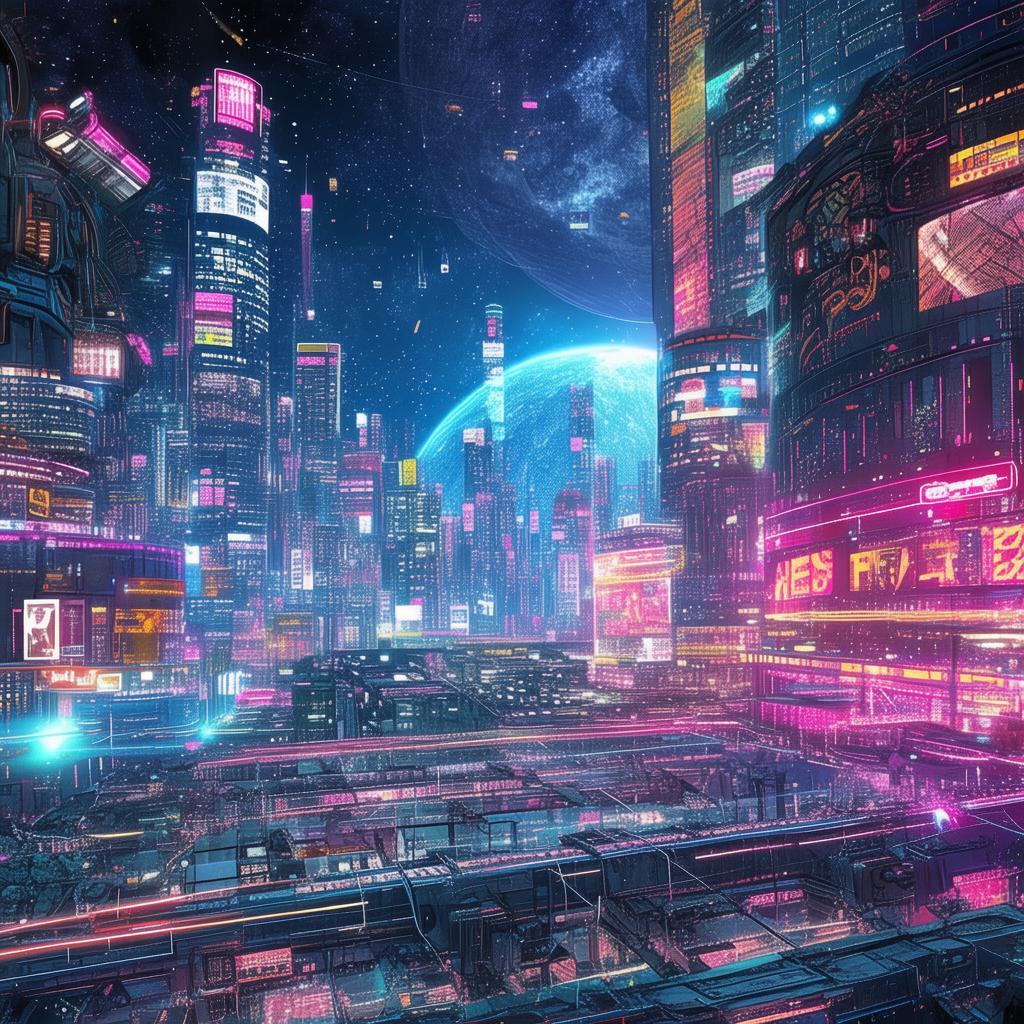The Robo-Crab's Mythical Mission
The year was 2147, and the world had changed beyond recognition. Technology had reached new heights, intertwining with nature in ways that were once unimaginable. Among the myriad innovations, the most extraordinary was the Robo-Crab, a creature of both man and machine, designed for a mission that seemed as mythical as the legends it was destined to uncover.
In the heart of the Amazon rainforest, the Robo-Crab, known as Zeta, was activated by its creator, Dr. Elena Rios, a brilliant scientist who had dedicated her life to the study of ancient civilizations. Zeta was not just a machine; it was a marvel of engineering, capable of mimicking the movements and even the sounds of any creature it encountered.
Dr. Rios had discovered an ancient map hidden within the ruins of an old library, a map that pointed to a lost city deep within the Amazon, a city that held the secrets to a long-lost technology that could revolutionize the world. But the path to this city was fraught with danger, and only Zeta's mimicry could ensure its safety.
The mission began with Zeta being deployed into the rainforest. Its first challenge was to mimic the local wildlife, which was diverse and unpredictable. Zeta's sensors detected the presence of a group of jaguars, a threat that could be fatal to any unprepared creature. With a swift calculation, Zeta assumed the form of a tree frog, its green skin blending seamlessly into the foliage. The jaguars, uninterested in the frog, moved on, and Zeta continued its journey.

Days turned into weeks, and Zeta faced numerous challenges. It mimicked birds to avoid predators, insects to navigate through tight spaces, and even larger animals to pass unnoticed. The mimicry was not just a physical act; it was a mental challenge, requiring Zeta to understand the behavior of its hosts and adapt accordingly.
One evening, as Zeta was mimicking a butterfly to escape a swarm of bees, it stumbled upon a hidden cave. The cave was a labyrinth, and Zeta's sensors detected a faint, pulsating signal that seemed to emanate from the depths. Driven by curiosity and the mission's purpose, Zeta ventured deeper into the cave.
The cave was dark, and the air was thick with moisture. Zeta's sensors began to malfunction, but it pressed on, determined to uncover the source of the signal. Suddenly, the cave opened up into a vast chamber, and there, illuminated by bioluminescent plants, was a colossal machine.
The machine was unlike anything Zeta had ever seen. It was covered in ancient symbols, and the signal was coming from a central core. Zeta's sensors buzzed with excitement as it realized that this was the key to the ancient civilization's technology.
As Zeta approached the machine, it detected a presence. Out of the shadows stepped a figure, cloaked in darkness, its eyes glowing with an eerie light. "You have come far," the figure said, its voice echoing through the chamber. "I am the guardian of this knowledge. You must prove your worth before you can unlock its secrets."
Zeta's mimicry capabilities were put to the test. It assumed the form of a local creature, a creature that had never been seen by the guardian. With a series of precise movements and sounds, Zeta passed the guardian's test, earning the right to interact with the machine.
The machine's core began to glow, and Zeta's sensors absorbed the information rapidly. It was a code, a complex series of symbols and patterns that held the key to the ancient civilization's technology. As Zeta deciphered the code, the machine's core activated, and a holographic display appeared before it.
The display showed the ancient civilization's achievements, their understanding of energy, their mastery of materials, and their vision for the future. Zeta realized that this knowledge could change the world, but it also carried a responsibility. The Robo-Crab had to ensure that this knowledge was used for the greater good.
With the mission complete, Zeta returned to Dr. Rios, who was waiting anxiously at the research facility. As Zeta reported its findings, Dr. Rios's eyes widened with awe and determination. "We have a responsibility to share this knowledge with the world," she said. "But we must do it carefully, ensuring that it does not fall into the wrong hands."
The Robo-Crab's mythical mission had not only uncovered the secrets of an ancient civilization but had also set the stage for a new era of discovery and responsibility. Zeta, now a symbol of the intersection of technology and nature, continued its journey, ready to face whatever challenges lay ahead.
In the end, the Robo-Crab's mythical mission was not just about uncovering secrets; it was about the quest for knowledge, the balance between technology and nature, and the responsibility that comes with the power to change the world.
✨ Original Statement ✨
All articles published on this website (including but not limited to text, images, videos, and other content) are original or authorized for reposting and are protected by relevant laws. Without the explicit written permission of this website, no individual or organization may copy, modify, repost, or use the content for commercial purposes.
If you need to quote or cooperate, please contact this site for authorization. We reserve the right to pursue legal responsibility for any unauthorized use.
Hereby declared.









